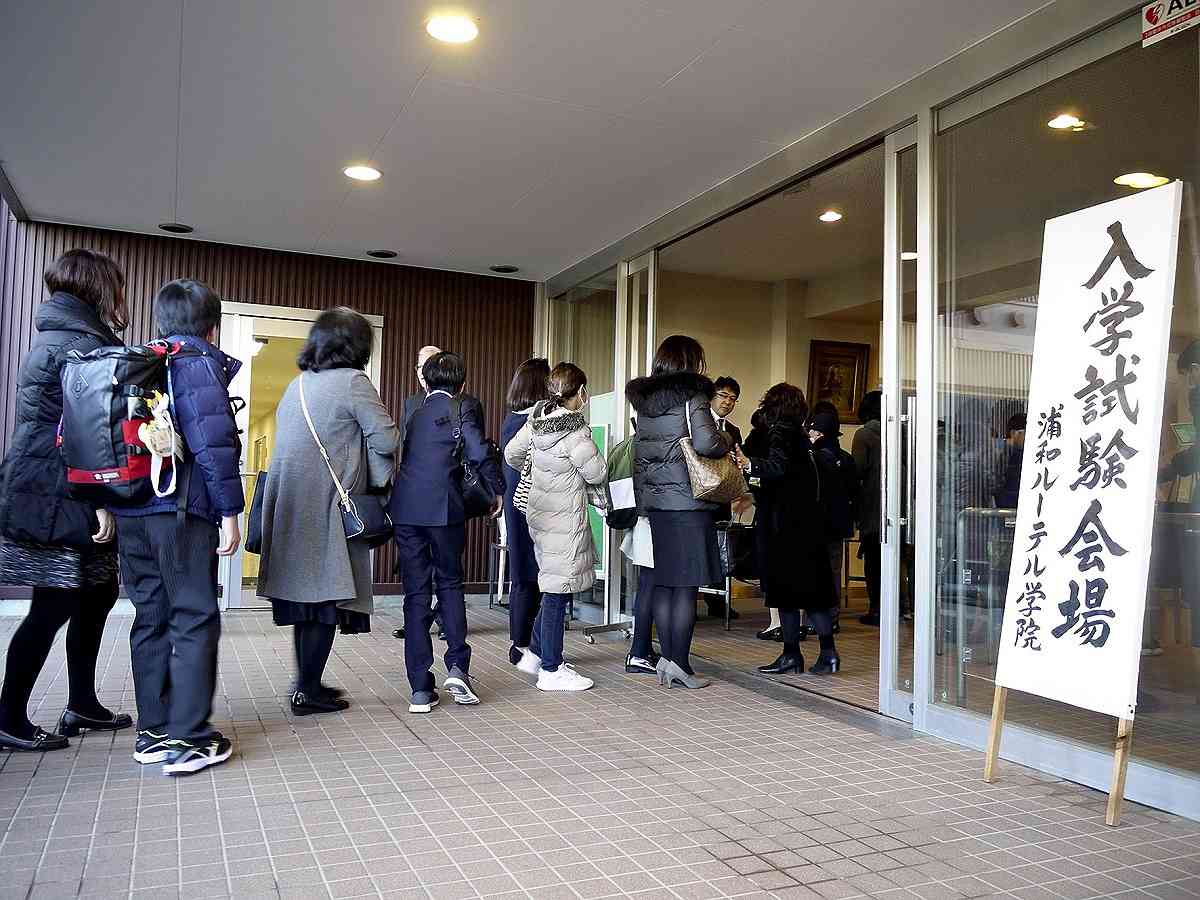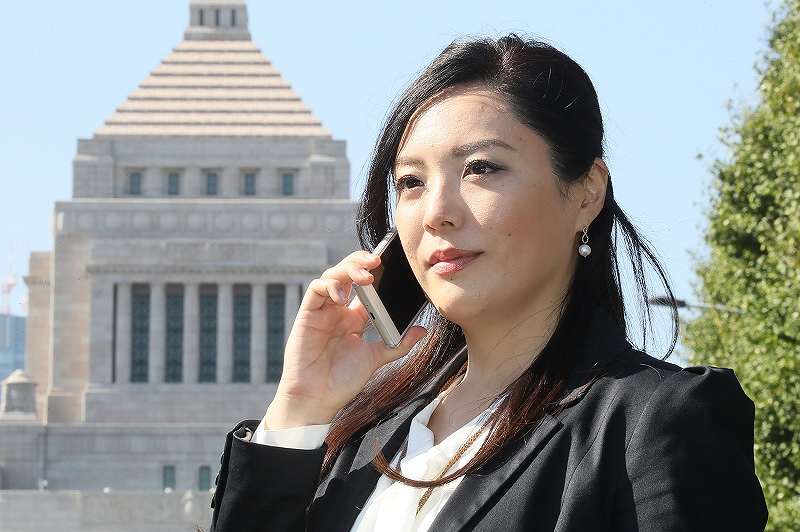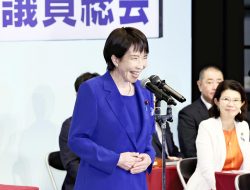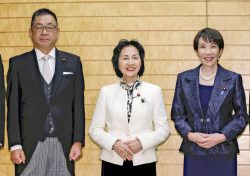
Sixth-grade children and their parents head to a junior high school entrance examination.
8:00 JST, March 11, 2023
Cherry blossoms are a beautiful symbol of the new school year, which officially begins in April in Japan, when the trees are in full bloom. But for “chuju,” an unofficial school year effectively begins in February when cherry blossom buds are still dormant.
“Chuju” is short for “chugakko juken,” which means “junior high school entrance exam.” Most such exams are held in February for students in the sixth grade of elementary school, so children start studying in February of the previous year — or even earlier — as if it were the start of a new school year.
From this February, an 8-year-old boy living in Yokohama started taking cram school classes once a week in February. It’s hard for a little boy in second grade to commute to cram school by train after regular school with a bag of heavy textbooks on his back. Although he usually likes to play outside, he explains why he joined the cram school this year, saying, “My mom told me that I should start this year, otherwise I would fail the entrance test to get into cram school and I wouldn’t even be able to study there.”
In the greater Tokyo area, the number of chuju examinees reached a record high of 66,500 this year. Many 12-year-old sixth graders have been attending chuju cram schools for years for advanced subject-area studies, as they prepare to take the exams to enter private or national junior high schools. Most of them started attending cram schools in February of third grade. Fourth grade used to be seen as the starting point by cram school standards, but competition even in third grade has become so overheated that an increasing number of parents are concerned that their children will find no cram school openings in the upper grades, which leads more and more children to attend cram schools from lower and lower grades.
We are now in what is said to be the third chuju boom. According to major cram schools, chuju cramming has been on the rise since 2016, with current participation levels far exceeding the 43,716 students of 2007, which was called the second boom.
One major background factor is the changed educational environment. In the 1970s, when the first boom occurred, there was a division between those who aimed for higher education and those who did not. Today, the situation has changed, and an increasing number of middle-class parents are making early investments from elementary school, aiming for university entrance exam success and high social status.
Another factor is the increase of dual-income households, mainly in the greater Tokyo area, along with the declining birthrate. If the number of children is small and disposable income increases, the amount spent on education for one child will increase, and it becomes natural for families who are passionate about their children’s education to become chuju-focused.
Most private schools offer what they call unique methods of advanced education, which include more detailed guidance than is available at the average public school, which definitely makes them appealing for lots of parents. Another advantage is that children can spend six years (combining junior high and high school) in an environment where they can work hard with similarly oriented peers.
On the other hand, several problems have emerged, such as strong stress built up in children due to intense study and exposure to fierce competition at younger ages. Also, some believe that the overheated chuju phenomenon could be a cause, as well as a consequence, of the declining birthrate.
Even among parents who are pushing their children into it, it is commonly acknowledged that “chuju is a billing game.”
To improve their children’s grades, parents tend to spend more than ¥500,000 on summer courses, winter courses, special training and so on towards the end of the sixth grade. In addition, striving to ensure their children win admission to their target schools no matter what, parents even stretch to spend still more money on private tutors and individual cram schools, which is why it’s said that the “billing game” has no ceiling. It costs a family an average of ¥3 million for three years at a cram school, and about ¥1.5 million is required every year after entering a private school that integrates junior and senior high school. In addition, considering that the cost of cram school for university entrance exams awaits still further down the road, the bill will amount to about ¥15 million by graduation from high school. Even in the greater Tokyo area, there are very few people who can afford this amount of money on a second or third child. Quite a few couples give up on having a second child for the sake of getting their first child through chuju, which cannot have a positive effect on the overall birthrate.
According to the 2022 vital statistics recently released by the Health, Labor and Welfare Ministry, the number of births in Japan fell 5.1% from the previous year to 799,728, falling below 800,000 for the first time since the start of modern statistics in 1899. Prime Minister Kishida called this situation “critical,” as he had already pledged to work on “measures to address the declining birthrate on a different level” and had also made it clear that he intends to present a path to doubling the child-related budget by June. Although the expansion of child allowances is being considered for economic support, it is unclear whether this will result in the births of second or third children. With education mania heating up, cash allowances are more likely to flow into cram schools and private schools.
The fact that chuju has become so overheated in the first place is also proof that many people are not satisfied with the quality of public education. It has been pointed out that since teachers must put in long hours of hard work, the shortage of skilled teachers is becoming more serious and the quality of education is declining. Appointing excellent human resources as teachers and enhancing public education are also important measures against the declining birthrate.
Last April, a 47-year-old woman whose child entered one of the most competitive junior high schools in Japan experienced bitterness after attending the entrance ceremony with a cheerful feeling. A brochure she received from the staff of a university entrance exam cram school waiting at the school gate said: “Congratulations on your enrollment. Your next goal should be entering the University of Tokyo.”
Her son started attending this cram school right after he entered the junior high school he had worked so hard to get into, saying, “I don’t want to fall behind other students.”
The woman sighed, “Will the cram school billing game continue until he enters university?”
Political Pulse appears every Saturday.

Yukiko Ishikawa
Ishikawa is a staff writer in the Political News Department of The Yomiuri Shimbun.
"Editorial & Columns" POPULAR ARTICLE
-

Violations of Subcontract Law: Major Automakers Must Eliminate Old Practices
-

Local Governments’ Tax Revenues: Devise Ways to Correct Imbalances in Tax Sources
-

5 Japanese Business Dinner Mistakes to Avoid — and What They Taught Me About Business in Japan
-

Heavy Rains in Asia: Support for Victims, Flood-Control Measures Urgently Needed
-

New Nuclear Threat: China Seeking to Follow U.S., Russia in Military Expansion
JN ACCESS RANKING
-

Keidanren Chairman Yoshinobu Tsutsui Visits Kashiwazaki-Kariwa Nuclear Power Plant; Inspects New Emergency Safety System
-

Imports of Rare Earths from China Facing Delays, May Be Caused by Deterioration of Japan-China Relations
-

University of Tokyo Professor Discusses Japanese Economic Security in Interview Ahead of Forum
-

Japan Pulls out of Vietnam Nuclear Project, Complicating Hanoi’s Power Plans
-

Govt Aims to Expand NISA Program Lineup, Abolish Age Restriction

























